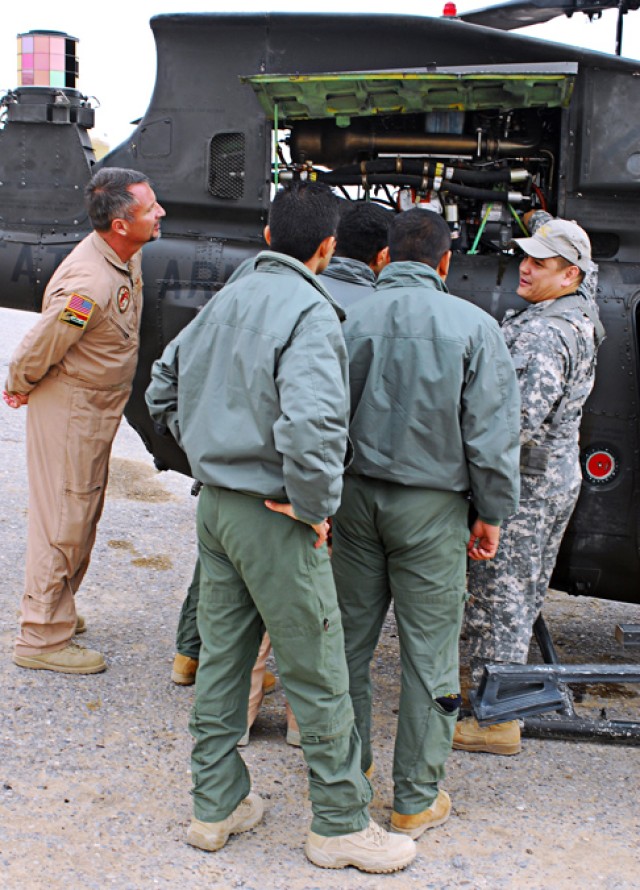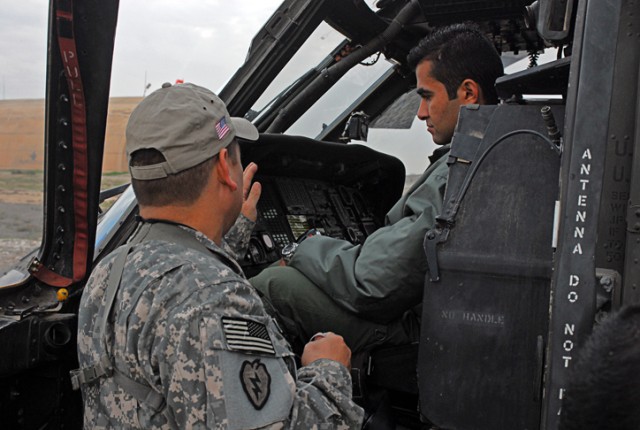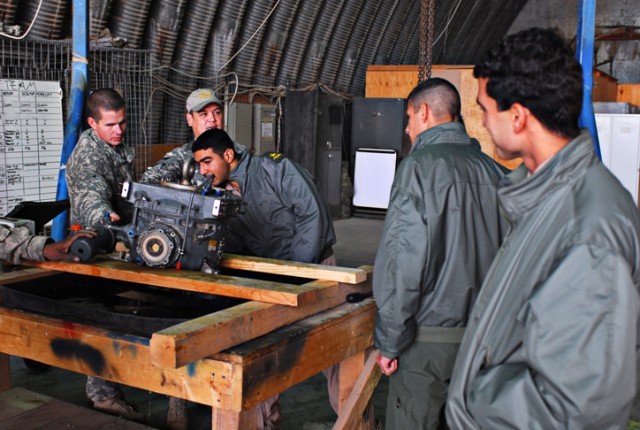FORWARD OPERATING BASE WARRIOR, KIRKUK, Iraq- Months of training, hard work and dedication is what it took to get a group of Iraqi Air Force students, training to become helicopter pilots, to where they are. They have already completed the first part of their training, and are ready and eager to continue to learn and improve on their skills.
In support of their studies, Soldiers from the 2nd Squadron, 6th Cavalry Regiment, 25th Combat Aviation Brigade, invited the IAF students to an open house on Forward Operating Base Warrior, Kirkuk Nov. 25, where they had the opportunity to speak with U.S. Army aviators and get a close look at the helicopters they use.
According to 2nd Lt. Karam Ebrahem, one of the IAF students present at the event, he has often flown over the area that 2/6th Cav. operates from during his training flights.
"We have seen the aircraft and have asked a lot of questions," said 2nd Lt. Karam. "Now we get to see it. This answers a lot of the questions."
During the openhouse, the students were given a tour by U.S. helicopter pilots, who showed them the inner workings of the daily operations of a U.S. Army aviation squadron.
"We are just trying to familiarize them with the helicopter operations in an actual Army unit," said Chief Warrant Officer Steve Bridges, a Hilo, Hawaii, native and the squadron standardization instructor pilot. "We wanted to show them the equipment we use and the aircraft we fly."
"As an instructor, this is very good," said Bill Harper, a Westar helicopter instructor that trains the IAF students. "All the things we teach these guys are kind of abstract; this kind of makes it real."
This shows the IAF students that what they are being taught during school - the language, training, and techniques - are actually used by military aviation units.
During the visit, the helicopter pilots got to look at two different helicopters: the Kiowa Warrior and the Blackhawk, and they saw how they are maintained and how they are refueled and rearmed.
This visit takes it from theory and shows an actual organization that is doing the same things that the IAF helicopter pilots are learning, explained Harper.
For the students, this was an opportunity to see what is in store for them.
"I think it is a good chance to see what we are going to be doing later," said Karam.
Once the students complete their approximately eight-month long flight school, they will move to Taji, Iraq, to receive a more in-depth school that focuses on the particular helicopter they are going to fly on a day-to-day basis once they are in a regular aviation unit.
This was a good place to meet pilots that have combat experience who can share their knowledge, said Karam.
The visit also exposed them to a new type of aircraft they wouldn't normally see.
"This was a good chance to learn about something new," said Karam. "I like to see things that I don't know about. Part of being a pilot is trying to learn more and more about different aircraft."
"This is definitely something I would like to come back and see again," he said.






Social Sharing